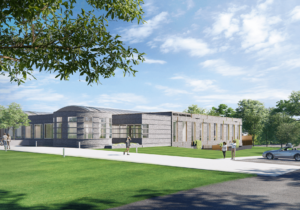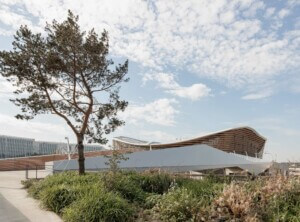On a typical gray English morning, a humble timber structure glows like a Japanese paper lantern from Clare College, one of the University of Cambridge’s 31 colleges. Only from the Garret Hostel pedestrian footbridge can a visitor catch a glimpse of the modest masterpiece by London practice Witherford Watson Mann Architects (WWM). The new River Wing is a three-story addition made of oak and glass. Figuratively and physically, it shines in contrast to the surrounding 17th-century Tudor architecture of red brick and yellow stone. However, there are subtle connections to the nearby Jerwood Library, at the base of the footbridge.
Fit snugly on its compact site, River Wing is built of engineered oak with traditional joinery of glued rods and dovetail joints. This frame gives way to relatively spacious interiors and accommodates a sunlit cafe, restroom, and staircase, as well as a much-needed fire escape and safer passageways. But despite housing all of this, the structure occupies just a sliver of land: 3 feet wide at its narrowest bit and 26 at its widest, the architecture stretches 393 feet long, culminating at the riverfront.
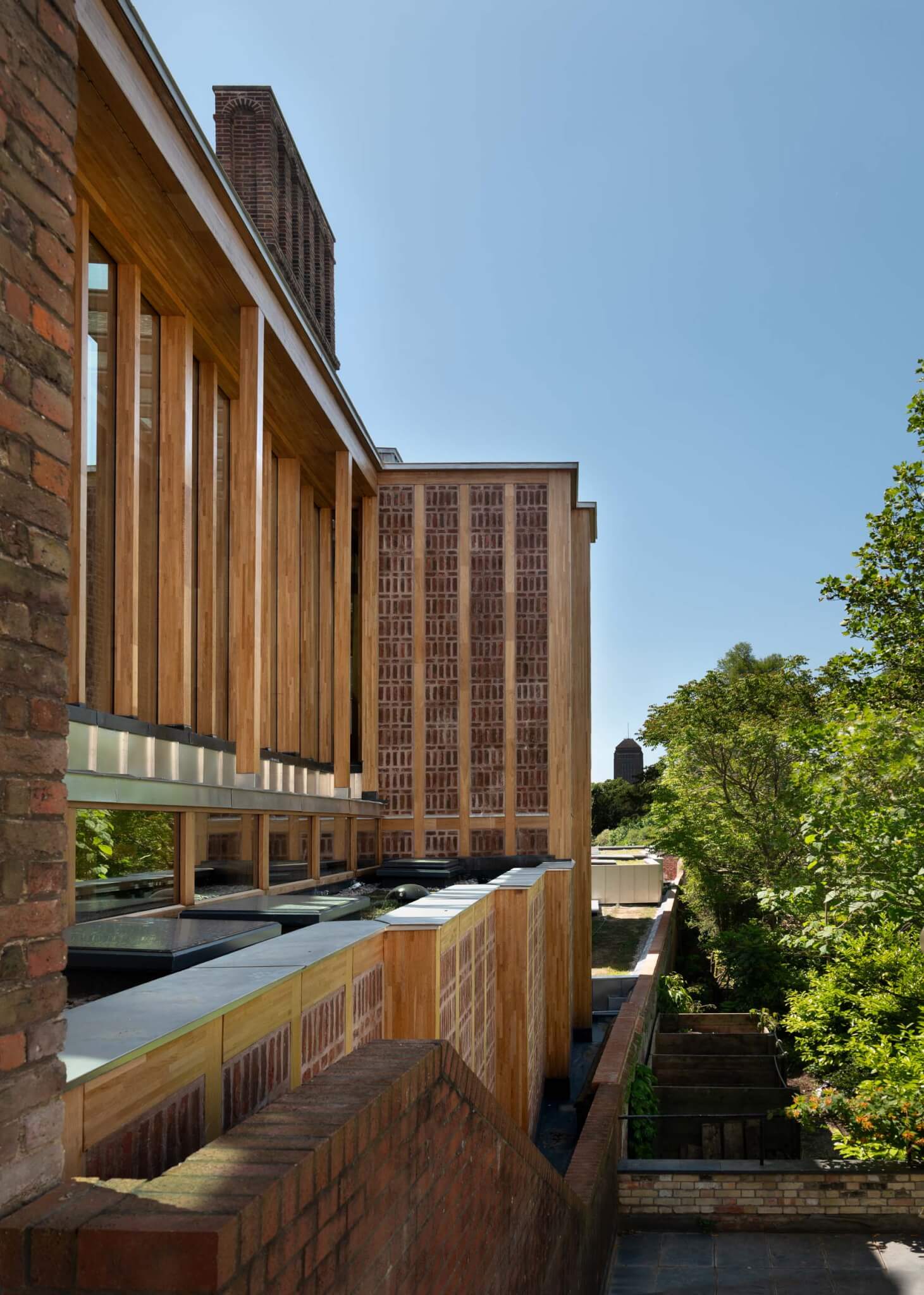
Accessibility at the heart
Founded in 1326, Clare College is the second oldest at Cambridge and was the first to accept women in 1972. With an Oxbridge-style quadrangle, its main building, Old Court, is accessed through a gate and traditional porter’s lodge. The gate reveals a grassy lawn, with a door on the right concealing WWM’s oak intervention. The transformational project brings Clare College’s Old Court into the 21st century and improves the college’s notoriously poor circulation.
For decades, students at Clare College carried trays of food up a spiral staircase from an underground kitchen. Longer ago, they infamously ran across the courtyard in robes to shower. There are stories of professors needing to leave office windows open to meet safety standards and escaping from them during fire drills because the building did not have a fire escape. Now, it has a spiral fire escape—perhaps the most beautiful ever built—though sadly it’s not for everyday use.
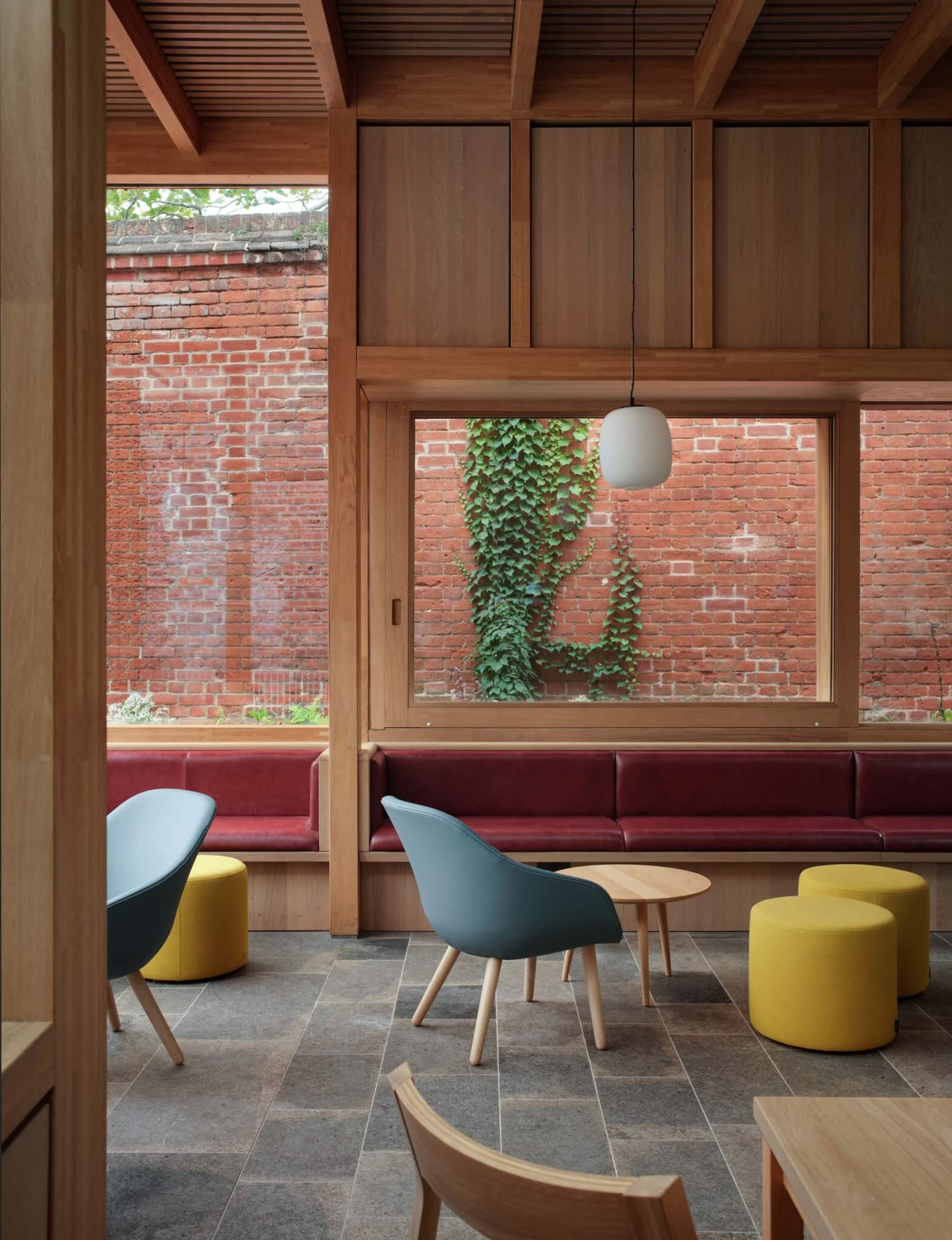
Clare College has about 500 students, and Old Court acts as a home base for its undergraduates, postgraduates, and staff, to eat, study, and socialize. River Wing adjoins the Grade I–listed building (the highest landmark status in the U.K.) along its brick North Wall, which was slowly excavated for over a year and carefully stripped of a century-worth of appendages, from boilers to toilets, all in preparation for the new construction. “It felt like a bodily act trying to repair,” said Stephen Witherford. “We had never done anything like that before.”
Precision, predetermined
Apart from the slow time clearing the site, the oak structure was built relatively fast. The frame was erected in just 20 weeks, led by husband-and-wife team Darren and Sarah Kynaston and their son Will, who Constructional Timber employed to construct the project. The family team made for an “unusual” yet pleasant experience, said Witherford, explaining that Constructional Timber is one of the relatively few companies leading this type of structure in the U.K. “They know their manufacturing processes very well and can bring this knowledge into design conversations at an early stage,” he added.
River Wing’s success is also due to an exacting level of planning by civil and structural engineers Smith & Wallwork and the 300 connections individually drawn by project engineer Freya Williams. “The most interesting thing about the laminated oak structural frame is how precise it needs to be, like steel,” said Witherford. “What you draw and what goes into that CNC machine is what you get.” The oak came from France, was laminated in Spain, and CNC’d in Barnsley, about a three-hour drive north of Cambridge.
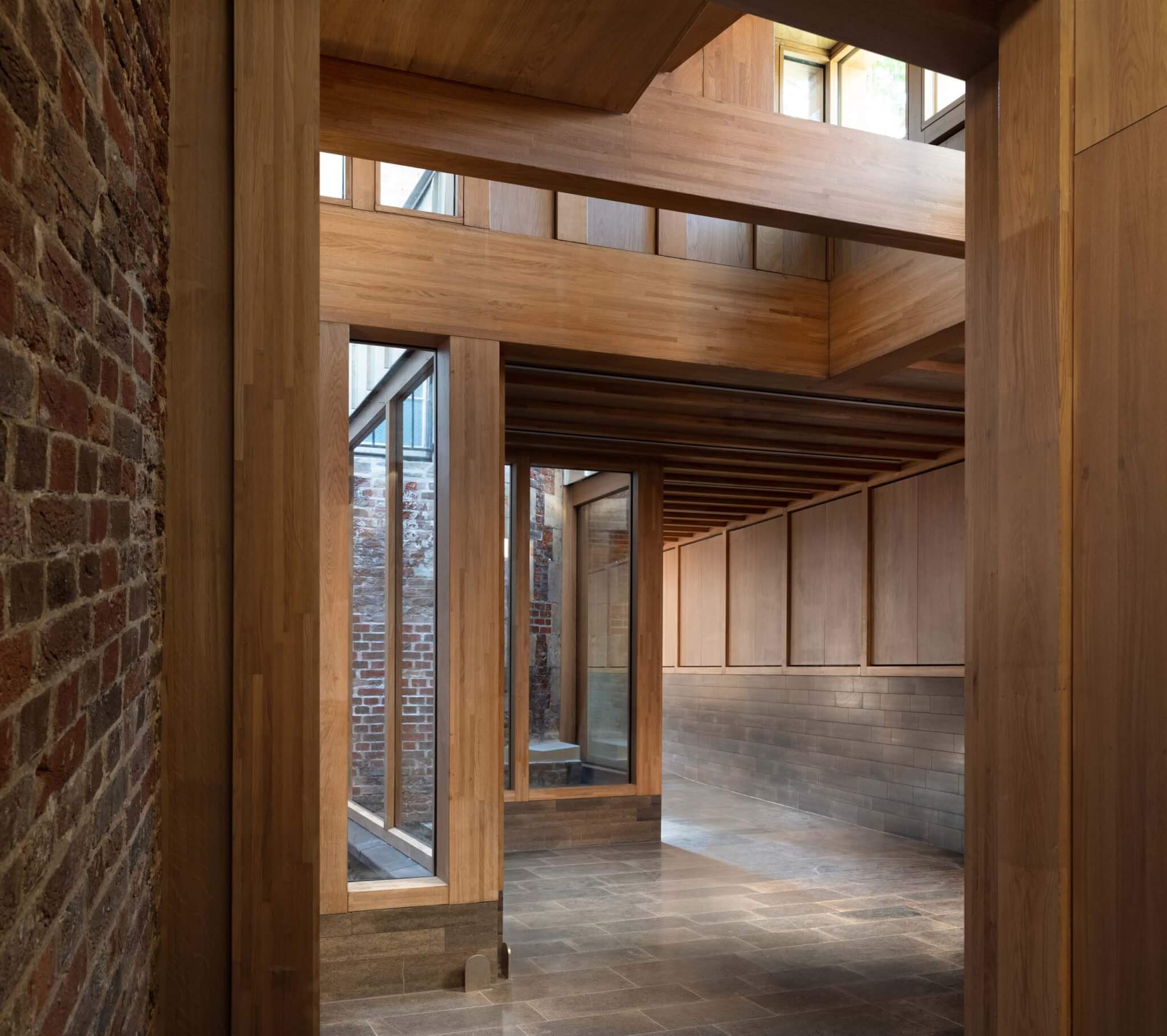
A change of scenery
Perhaps the most attractive aspect of WWM’s project is a new cafe that doubles as a communal area for everyone at Clare. Many colleges at Cambridge have cafes, but none are as lovely: it is modern, light-filled, and calm, complete with a small terrace and rare river views. Unlike Clare’s other eating areas, everyone can gather here almost any time of day. The cafe provides a break from the usual library or dorm environment and has a more relaxed atmosphere akin to a trendy coffee shop. Inside, most of the self-supporting timber and existing red brick are left exposed wherever possible. The floors are made of Purbeck Grubstone, a grey limestone from Dorset, that offset the natural oak and red brick throughout.
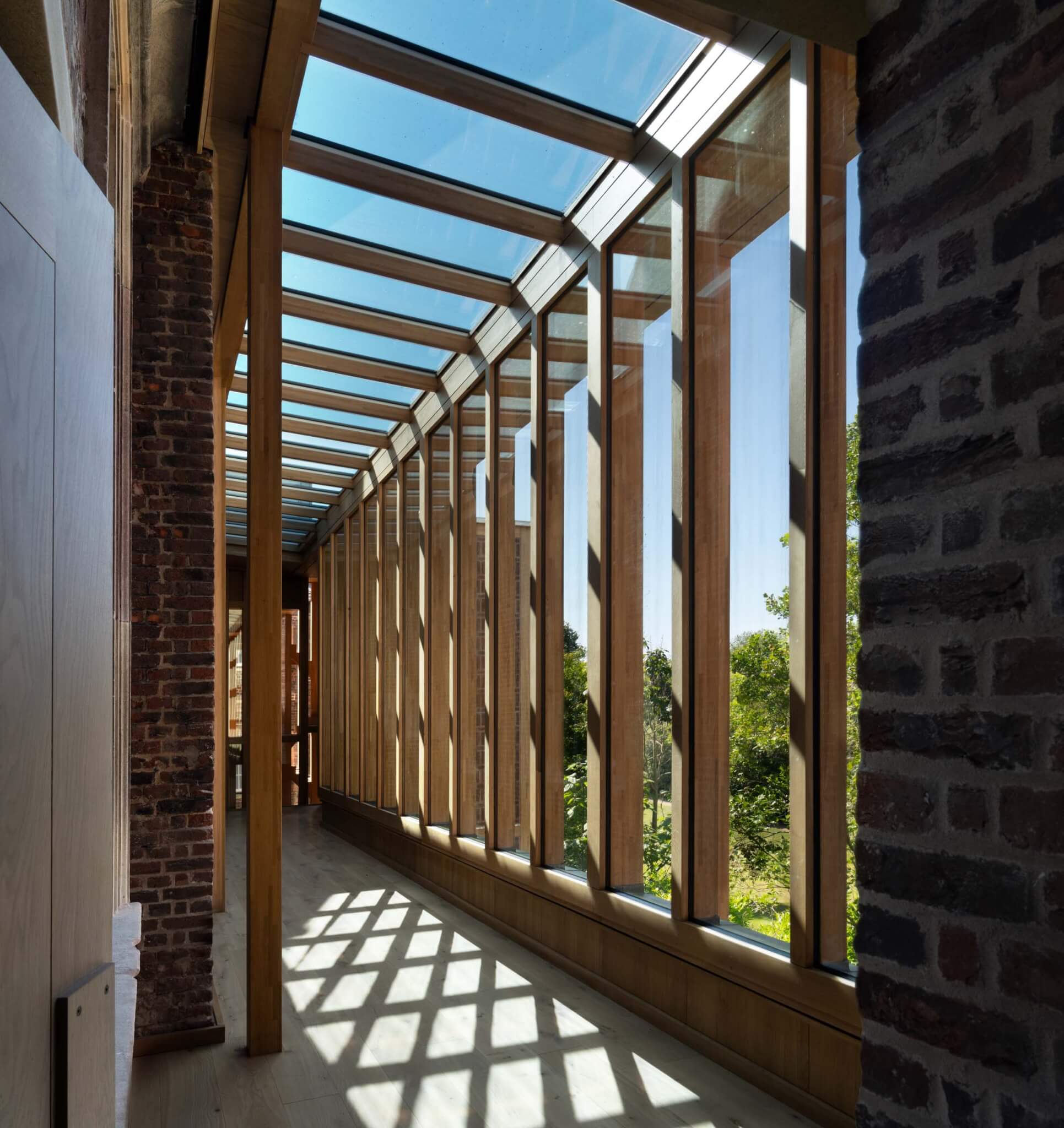
River Wing at Clare College is a feat of friendly collaboration and thoroughness. It joins a handful of new laminated-timber-framed structures at the university, such as Homerton College’s dining hall by Feilden Fowles, Magdalene College’s library by Niall McLaughlin Architects, and a timber-clad student dorm for Churchill College by 6a Architects. Cambridge colleges operate independently of each other, even in their commissioning of buildings, but the choice of structural timber fulfills their ambition to upgrade their buildings sustainably.
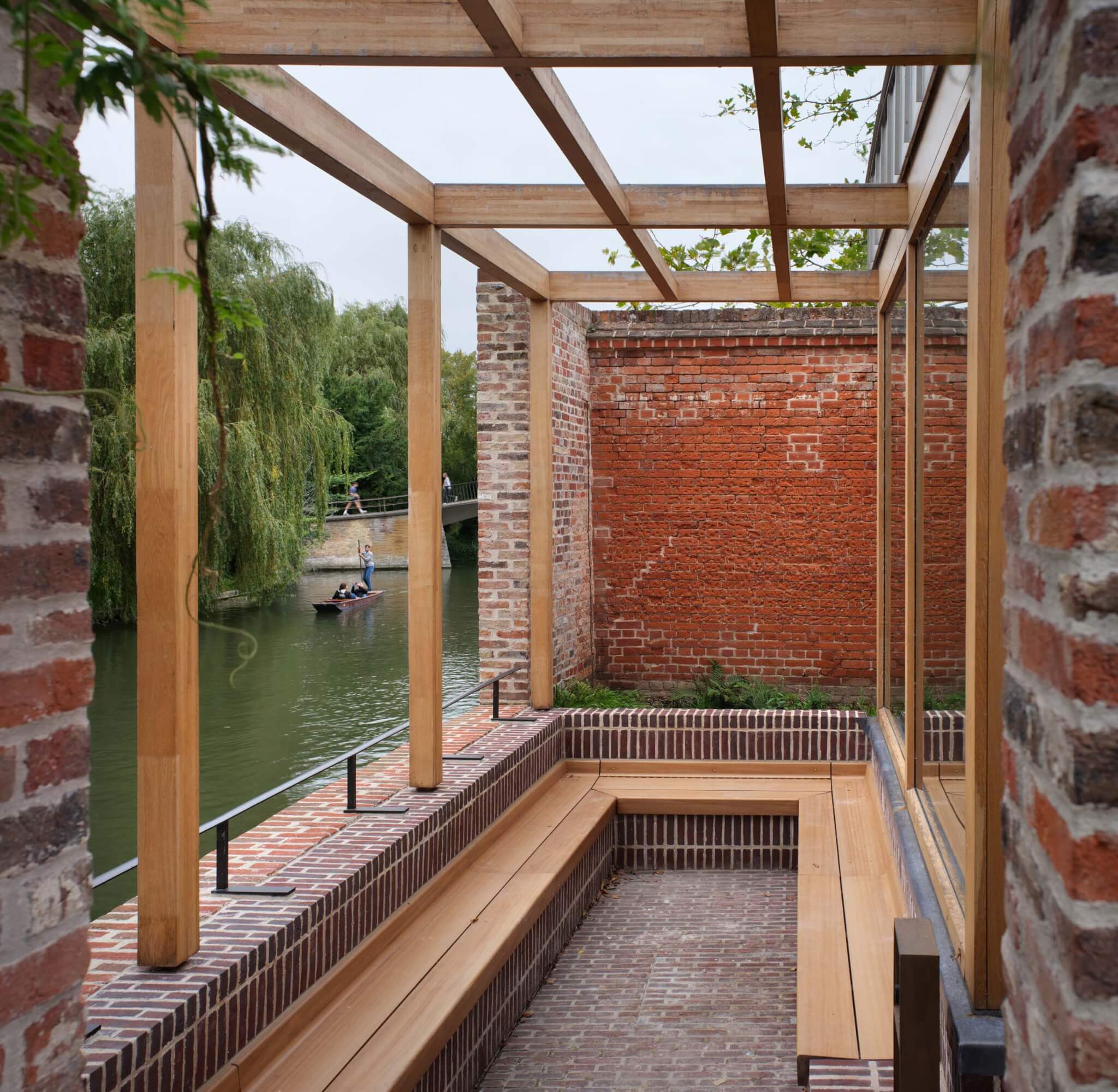
“The student body within each College is calling for more sustainable buildings, both in terms of their construction and decarbonizing energy supplies in use,” Witherford said. The timber facilitated a quick construction timeline and the use of less material while maintaining strength. Another lesser-known advantage was minimal noise—an important consideration because Old Court remained open during construction.
In addition to River Wing, WWM has also created student housing for the university northwest of the city. The firm has a reputation for designing with timber in historic settings, including Astley Castle, where it won the RIBA Stirling Prize for Architecture in 2013. WWM is also behind London’s The Courtauld Institute of Art and senior housing in the city’s Bermondsey neighborhood.
Bridget Goldberg is an architecture writer and communications consultant based in London.









